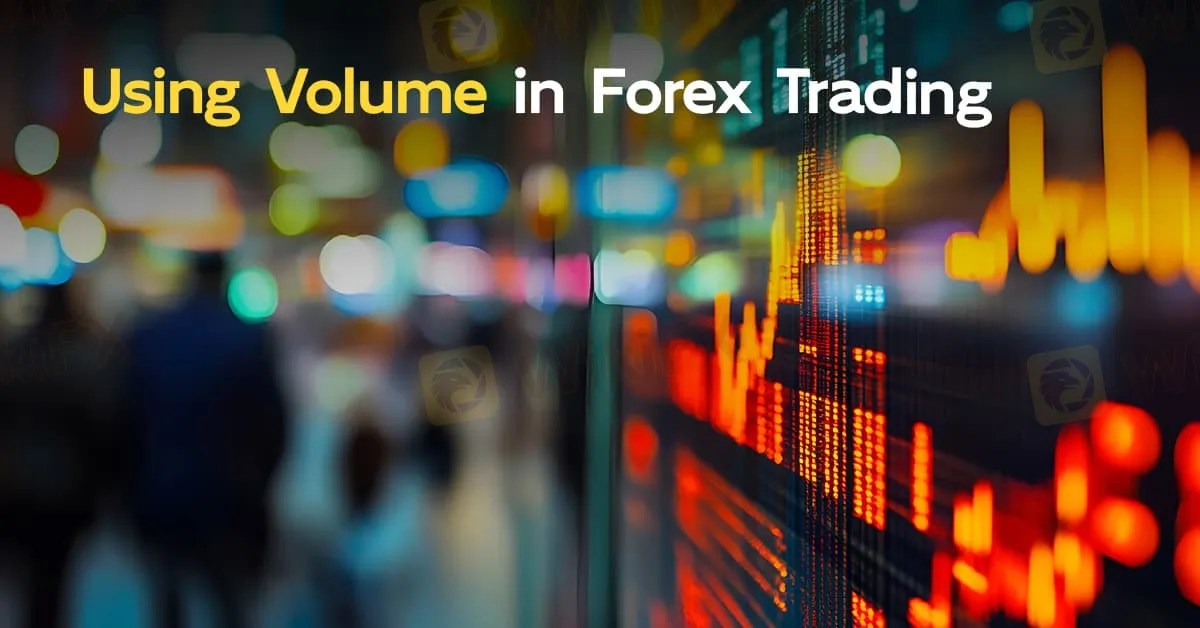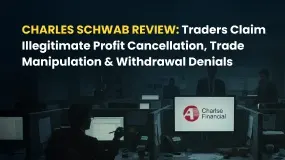简体中文
繁體中文
English
Pусский
日本語
ภาษาไทย
Tiếng Việt
Bahasa Indonesia
Español
हिन्दी
Filippiiniläinen
Français
Deutsch
Português
Türkçe
한국어
العربية
Using Volume in Forex Trading
Abstract:Price movement in the market often reflects the rhythm of trading volume, with higher volumes propelling prices forward like waves in the ocean. Sometimes, these waves form part of a broader trend, pushing prices steadily in one direction. Other times, the market is choppy, with sudden bursts of volume leading to erratic price behavior. And when the volume is low, price movements tend to be narrow and subdued, much like a still and quiet sea.

Price movement in the market often reflects the rhythm of trading volume, with higher volumes propelling prices forward like waves in the ocean. Sometimes, these waves form part of a broader trend, pushing prices steadily in one direction. Other times, the market is choppy, with sudden bursts of volume leading to erratic price behavior. And when the volume is low, price movements tend to be narrow and subdued, much like a still and quiet sea.
No matter the state of the market, price movement is fundamentally connected to volume. However, many traders, myself included, tend to focus on price patterns without fully considering the impact of volume. From what Ive seen on various trading forums, this is a common practice, though overlooking volume can mean missing out on critical information.
Lets explore the significance of volume in Forex trading and how understanding it can lead to more informed trading decisions.
What is Volume in Forex?
Volume in trading represents the total number of transactions or units traded during a specified time frame. For instance, in a daily chart, each volume bar represents the number of units traded over that day. In an hourly chart, the volume bar shows the transactions within that hour.
However, in the decentralized world of Forex, volume works a little differently compared to centralized markets like stocks or futures, which are traded on exchanges like the NYSE or CME.
How Volume is Calculated in Forex
Forex operates as an over-the-counter (OTC) market, meaning there‘s no central exchange where all trades are recorded. As a result, the volume data that appears on a broker’s chart reflects only the activity within that broker‘s platform. This data can differ significantly from one broker to another since it doesn’t represent the entire Forex market.
This limitation also applies to other OTC markets, such as CFDs and cryptocurrencies. In centralized markets, like equities and futures, brokers report the actual volume from the exchange, meaning all traders see the same volume figures regardless of their broker.
In Forex, brokers typically use “tick volume” to measure market activity. Tick volume counts the number of price changes or “ticks” during a given period rather than the total value of trades. While it doesnt show the true volume of money traded, it is widely accepted by traders as a reliable indicator of market activity. In many cases, tick volume correlates closely with actual trading volume and can still be used effectively in technical analysis.
The Importance of Volume in Trading
Volume can offer crucial insights into the strength or weakness of price movements. When volume is high during a price move, it indicates strong market interest, suggesting the trend is likely to continue. Conversely, low volume during a price move could signal a lack of conviction and a potential reversal.
By using volume alongside price action, traders can gain a deeper understanding of market sentiment. For example, a breakout accompanied by high volume is more likely to be sustainable than one with low volume, which might be a false signal. Similarly, a reversal that occurs in high volume may indicate a significant shift in market direction.
Conclusion
Volume is an often-underappreciated tool in technical analysis, yet it provides valuable insights that go beyond price alone. Whether youre trading Forex or other markets, paying attention to volume can help you confirm trends, spot potential reversals, and better understand market dynamics. Although Forex traders rely on tick volume due to the decentralized nature of the market, this metric can still offer meaningful clues about market activity and improve trading strategies. By incorporating volume into your analysis, you can make more informed and confident trading decisions.

Disclaimer:
The views in this article only represent the author's personal views, and do not constitute investment advice on this platform. This platform does not guarantee the accuracy, completeness and timeliness of the information in the article, and will not be liable for any loss caused by the use of or reliance on the information in the article.
Read more

Charles Schwab Review: Traders Claim Illegitimate Profit Cancellation, Trade Manipulation & More
Have you been lured into the Charles Schwab app for trading on the back of outrageous profit claims by the broker? Did you fail to receive any of these? Does the broker deny withdrawals every time you request and cancel your forex trading account? Have you been victimized financially by its trade manipulation? Act before you are left with a NIL balance in your account. Many traders have questioned Charles Schwab customer service and many other operational executives for the aforementioned illegitimate trading activities. In this Charles Schwab review article, we have shared some of their comments. Read on!

AMP Futures Exposed: Traders Raise Alarms Over Illegitimate Account Blocks & Bad Customer Service
Has AMP Futures blocked your forex trading account? Does it fail to provide any explanation for this act? Do you face issues concerning deposits to your AMP Futures account? Is the customer service non-existent for any trading query you raise with it? You are not alone! Many traders have been facing these issues upon AMP Futures login. Some of them have commented on AMP Futures review platforms. In this article, we have shared some reviews that you can look at. Read on!

FXGlory Review: Vanishing Profits, Capital Scams & Withdrawal Charges Keep Annoying Traders
Does FXGlory remove all your forex trading account balances upon fund withdrawal requests? Or do you witness incorrect trading account balances after fund withdrawals? Does the Saint Lucia-based forex broker charge you for fund withdrawals? All these and many more scam-related complaints have been filed against the forex broker. In this FXGlory review article, we will discuss several complaints. Read on!

PINAKINE Broker Review: A Complete Look at Its Services and Risks
Finding a trustworthy broker from the huge and often confusing world of online trading options is one of the biggest challenges a trader faces. In this competitive market, PINAKINE Liquidity Limited has appeared, getting attention with promises of high leverage and zero-commission trading. However, a closer look shows important factors that every potential client must think about before investing. The most important thing to consider with PINAKINE is that it has no regulation. This fact completely changes how risky the broker is and has major effects on how safe your investments will be. This review gives a complete and fair examination based on information available to the public. We will break down its services, trading conditions, platform technology, and the possible risks involved, helping you make a fully informed decision.
WikiFX Broker
Latest News
Stonefort Securities Review: A Fair Look at Safety, Rules, and What Traders Say
Trump asks for meat packer probe over beef prices
Voices of the Golden Insight Award Jury | Tim Waterer, Chief Market Analyst of KCM Trade
BASF CEO: EU CO₂ Trading Is A "Destruction Mechanism" For European Industry
Prop Firm Scams: When ‘Getting Funded’ Costs You Everything
PINAKINE Broker Review: A Complete Look at Its Services and Risks
One-Click Access to Broker Official Group Chats & Exclusive VPS Benefits
Consumer sentiment nears lowest level ever as worries build over shutdown
Uniglobe Markets MT4 Review: A Complete Look at Features, Costs, and Important Safety Issues
Is PINAKINE Broker Safe or a Scam? A 2025 Complete Review
Currency Calculator




